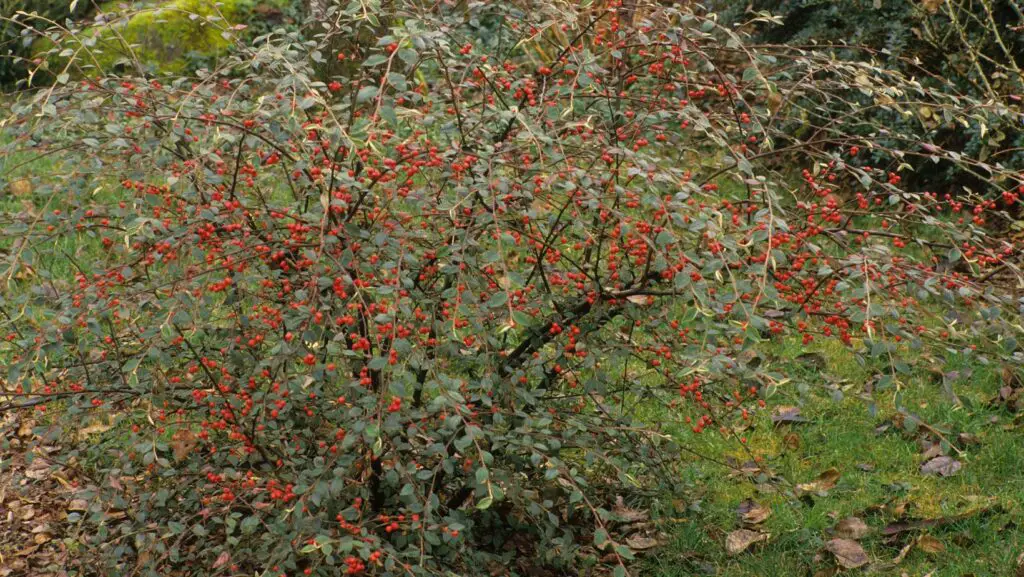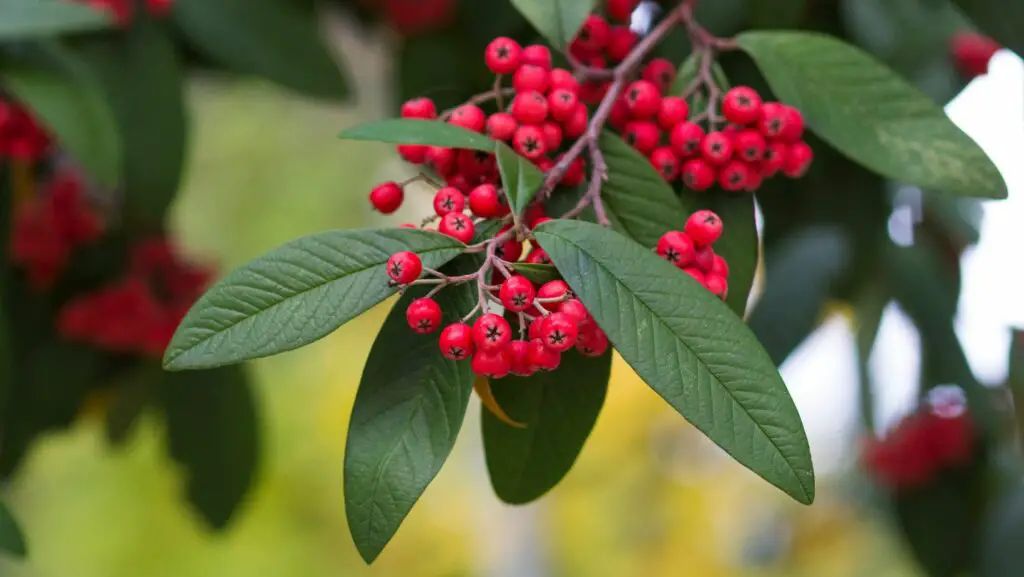
Widely used in the green spaces of cities and communities, cottonwoods still have a reputation of low-end plants. However, these shrubs have many assets, including their decorative fruits.
To be urgently rehabilitated.
In this article, I have gathered for you all the information about the cotoneaster shrub, its main characteristics, and what you need to know to plant and grow it.
Characteristics of the cotoneaster
| Scientific name | Cotoneaster spp. |
| Family | Rosaceae |
| Origin | Europe, Asia |
| Foliage | Deciduous or evergreen |
| Flowering | May-July |
| Rusticity | -15°C to -20°C (-59°F to -68°F) |
| Exposure | Sun or mid-shade |
| Soil | Indifferent |
Cotoneasters are vigorous shrubs, with a spreading or upright habit, and evergreen or deciduous leaves that are more or less leathery. The flowering is expressed by abundant small white or pink flowers, followed by orange to bright red berries, very decorative.
How to grow a cotoneaster shrub
Towards the end of the 1970s, cottonwoods were among the plants seriously affected by fire blight. This episode forgotten, they remain very easy to grow, in the sun as well as in the shade, on rich soils as well as on poor soils.
These shrubs tolerate regular pruning very well when used in hedges. In free form, prune only after fruiting by removing up to one third of the length of the branches.
How to grow a cotoneaster tree in a pot
Cottonwoods are at their most vigorous in the ground but are among the plants that are typically grown in large containers, especially for the spreading forms.
Re-pot in a container with a diameter equal to half the height of the plant, in a universal soil.
Prefer regular watering, but don’t hesitate to go away from time to time: cotoneasters can withstand periods of drought.
Where to plant a cotoneaster shrub
It makes an excellent ground cover, offering evergreen foliage and attractive flowers and berries. Alternatively, you can use it to dress the base of large shrubs and near trees. It can also be planted as a bed for a low-maintenance garden.
If you are looking for a hedge, cotoneaster is a great choice, as it grows quickly and can be trimmed to any shape.
It can also be planted in a large pot or window box, making it an ideal choice for small spaces.
Our selection

Spreading forms
- Cotoneaster dammeri, 50 cm high and 80 cm wide, has dark green evergreen foliage and a very lush habit. It bears numerous white melliferous flowers in May, and coral red fruits from September, which persist for most of the winter.
- C. dammeri ‘Skogolhm’, 1m high and 1,50 m in diameter, is more developed; its berries are bright red.
- C. horizontalis, 50 cm high and 1.50 m wide, has a very spreading habit and deciduous leaves. Its branches are all positioned on the same horizontal plane, giving it, when they are bare, a fishbone look (this is its English name). Its flowers are pinkish white, its berries bright red in October and all winter. C. horizontalis Variegatus’ has cream variegated foliage.
- C. microphyllus has tiny evergreen leaves and a very compact habit. Its flowers are white and its fruits light red to pink. It is ideal for growing in pots or as a border plant.
The erected forms
- C. franchetti, 2 m high and 1.50 m wide, has small grey-green evergreen leaves, with a silver reverse, on arched branches with flexible tips. The creamy-white bloom is sparse, but it offers numerous orange-red fruits from September to December.
- C. lacteus, 2 to 3 m tall and across, has heavily veined evergreen leaves, unremarkable whitish bloom, but many bright red fruits in clusters in October, which persist through the winter.
In a nutshell
The cotoneaster plant is a beautiful and hardy shrub that is perfect for gardeners of all levels. With its easy maintenance requirements and aesthetically pleasing appeal, it can easily be integrated into most gardens.
It’s low-maintenance requirements make it an ideal choice for those who want a beautiful garden without having to put in too much work. So whether you are looking to add a bit of color and beauty to your garden or want a simple and low-maintenance option, the cotoneaster plant may be exactly what you’re looking for.

Hi!
I am the guy behind Theyardable.com. I grew up on a homestead and I am here to share the knowledge I have and things I learn while living in the countryside.

